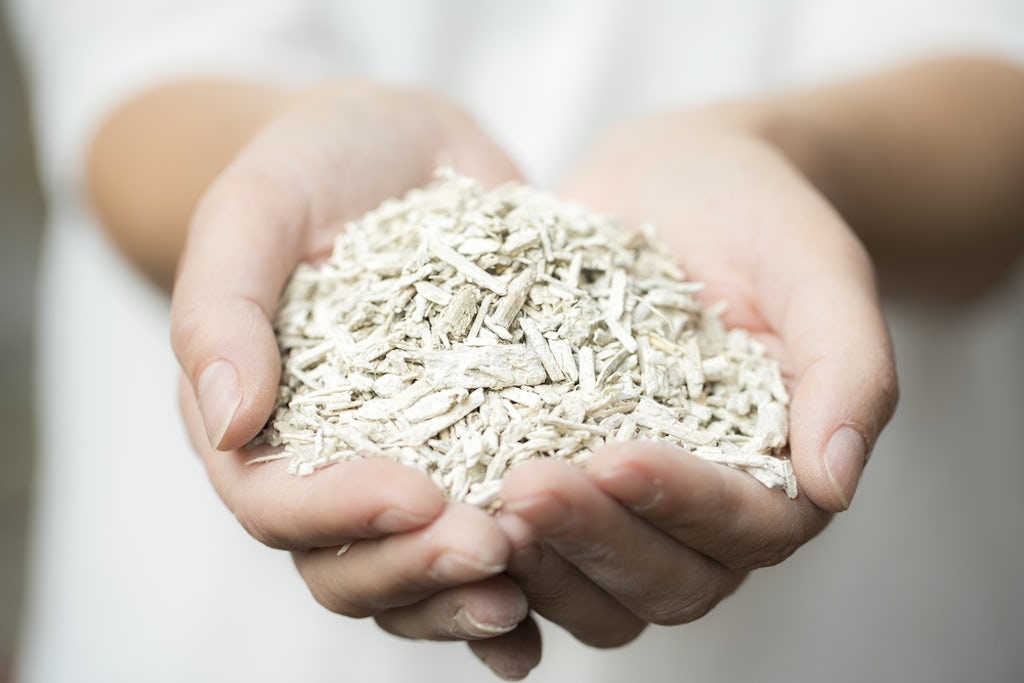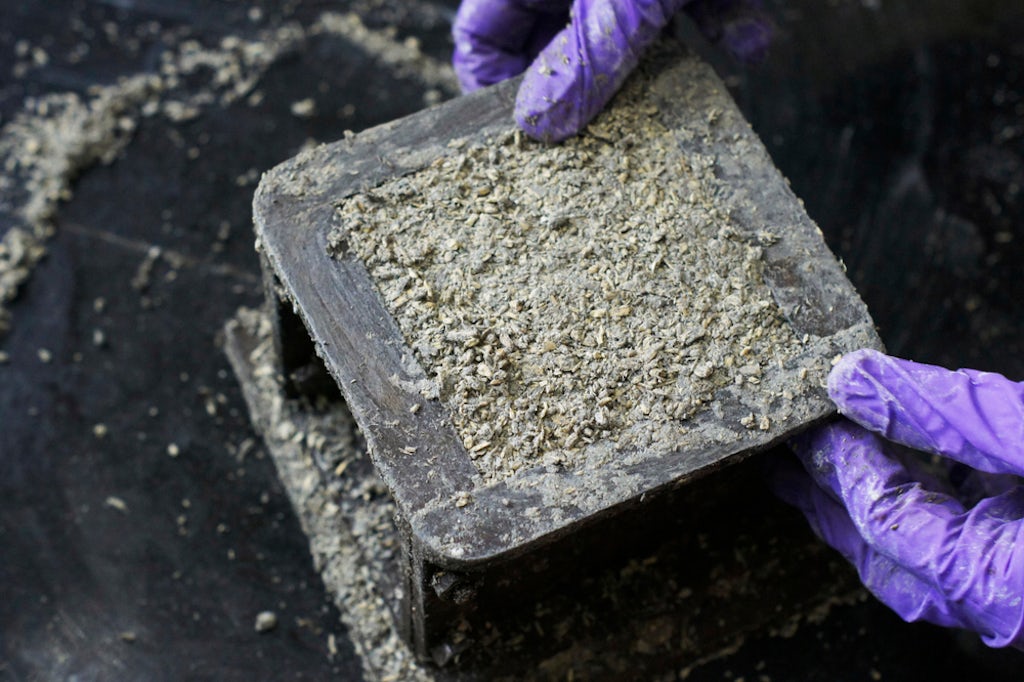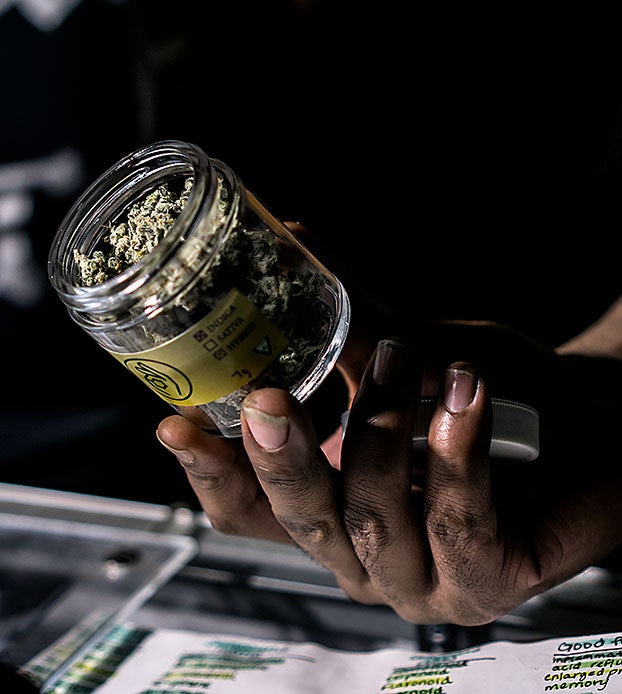With so many people spending their waking hours daydreaming about becoming homeowners and some perhaps deciding to spend the day smoking cannabis instead, it only makes sense to — kind of — combine the two activities.
Pennsylvania company Coexist has a solution: a tiny house made with hemp. The Traveler, a DIY cabin made with “hempcrete,” can be assembled at home with a bit of free time and help from some friends.
But just because you can build — parts of — a home with hemp, should you? Is it cost efficient?
The Traveler DIY cabin
At 14 feet long, 10 feet deep, and 15 feet high, the Traveler provides a cozy yet spacious 140 square feet of space (13 square meters). Coexist states that it can sleep up to six people — of average proportions, we assume — and potentially many more if you stack your house guests on top of one another.
The kit includes knocked down doors and windows to be assembled on site, an all timber frame with wood and metal joinery, all exterior and interior cladding, plaster, hemp insulation, a metal roof, and a mallet to bang it all together.
The cottage is constructed out of sustainable materials that can be put together by two to four people in a few weekends, according to Coexist. But if you’re the type who tends to botch every piece of IKEA you’ve ever tried to assemble, you should be warned that the Traveler comes with an illustrated instruction manual. You’re on your own to find the two to four people and the free weekends to get it done.
It can also be ordered as a loft, with either cedar or a corrugated metal facade, and interior finish in plaster on block, plywood, or drywall with a plaster subcoat.
What can you use your tiny hemp house for?
It may be hard to picture living in just 140 square feet of space — especially if you have kids. But if the past year of stay-at-home orders and social distancing taught us anything, it’s the value of having a reliable, separate home office where you can, somehow, maybe, get some work done.
According to architect Anastasiya Konopatskay, who founded Coexist with her husband Drew Oberholtzer, the Traveler was one of those good things brought on by the COVID-19 pandemic, like to-go cocktails from restaurants, and no longer blowing out the candles on a birthday cake before handing out slices to people who don’t live inside your COVID pod.
“We were struggling to get our work done with two small children at home,” Oberholzer said in and interview with Dwell, adding “we kept thinking — if only we could have a tiny office in the backyard.”
The couple, who own and operate a regenerative organic farm in Berks County, Pennsylvania, had already been working with hempcrete for a few years, she said.
“It was only natural for us to combine our experience of building small homes with healthy, unconventional construction.”
Oberholtzer also referred to the hemp houses as “a healthy, sustainable space for any need.”
The couple first made their imprint on the sustainable housing market in 2019, when they teamed up with Cameron McIntosh of Americhanvre Hemp Cast to develop the Hemp House on Wheels.

The house was constructed out of hempcrete, hemp hurds (the inner core of the hemp stalk), a lime-based binder, and water. They stated that together, the materials form a house that is mold, mildew, rot, pest, and fire-resistant.
In addition, the hempcrete “breathes,” allowing the house to regulate humidity.
The Hemp House on Wheels was taken to trade shows and conferences in order to showcase the benefits of hemp construction. It wasn’t put into production, though since 2019 the couple has produced their own pre-cast hempcrete blocks and are the US distributors of Hemp Blanket Batt Insulation, which can replace fiberglass insulation in home construction.
What is hempcrete?
Hempcrete is an all natural biocomposite material made of hemp, lime, and water. It is typically made of the woody core of the hemp plant, which has a high silica content, allowing it to easily bind with lime. It is only a seventh or an eighth the weight of concrete and is also resistant against mold. It is also said to be several times stronger and more elastic than concrete, making it an effective earthquake-resistant material.
Hempcrete is not used as the actual structural frame of housing, rather, it is used for the walls within the frame and to insulate floors and roofs. In the case of the Traveler, the hempcrete is in addition to the timber framing that comes with the kit.

It has been used as a building material in France for decades and has the ability to adapt to a wide variety of environments.
“When hemp, lime, and water are combined, it creates an assembly that is mold, fire, and insect-resistant. It’s perfect for climates like ours in the Northeast, but also for humid places like Florida and dry ones like California,” explain the couple.
And while it is more sustainable than many other building materials, that doesn’t mean hempcrete is without environmental cost. According to the company Hempcrete Direct, it requires around 2.5 acres of hemp to produce enough hemp hurd for a 1,250 square foot house.
Other hempcrete options
As it stands, the Traveler will only go into production once a minimum of five orders have been placed, according to the company. It is expected to retail for $27,000, and requires a $500 deposit up front, the company has stated.
While the Traveler could be a great option for people looking to build a small home office or pool house, people with more ambitious ideas may seek out other options.
For instance, companies like Hempcrete Direct sell hempcrete blocks, panels, insulation, and lime binder, for use in constructing houses that will not be part of any pre-planned kit. Coexist also sells hemp blocks (at $8.88 per square foot) and hemp blanket batt insulation in panels that are designed to fit between stud walls.
American Lime Technologies offers Tradical Hemcrete, a bio-composite building material made from hemp shiv and a lime based binder. In addition, the company sells Hemclad, a pre-cast all system for use in commercial and industrial buildings, and Hembuild, a panel of hemcrete used to evolve low-rise buildings.
How much does a hemp house cost?
Ultimately, building a house with hempcrete could cost significantly more than traditional building materials. According to Colleen Keahey Lanier, executive director of the Hemp Industries Association, the difference is quite stark — around $180 per square foot, as opposed to $120 per square foot on a traditional build. This could increase the cost by up to $100,000 depending on the size of the home, Lanier stated.
This is understandable considering that hempcrete is not widely used in construction in the United States. But as more people look for sustainable housing solutions, and as the use of hemp becomes more mainstream and acceptable to people across the country, this could very well change.
Sign up for bi-weekly updates, packed full of cannabis education, recipes, and tips. Your inbox will love it.

 Shop
Shop Support
Support
















